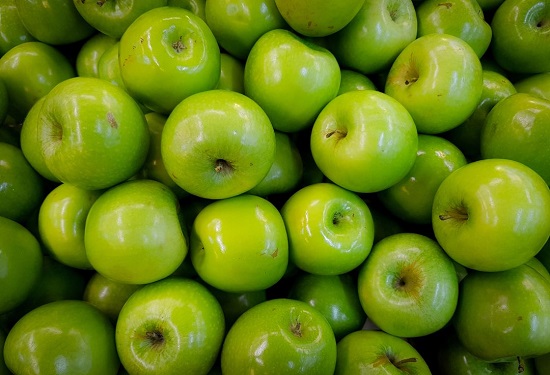As experts in cannabis marketing and public relations, we try to stay on top of the quickly evolving world of cannabis.
Part of what makes the cannabis world so dynamic is the plant itself and all of its many components. One of the latest hot topics is the elusive cannabis terpene known as farnesene.
Farnesene is most commonly recognized for its green apple peel or woody citrus aroma. But what does it do?
Specific Properties of Farnesene
Not to get all science teachery on you, but farnesene refers to 6 nearly-identical chemical compounds. Cannabis doesn’t have the market cornered on farnesene. It’s found in several plants, including the potato plant – where it acts as an insect repellant. One farnesene compound serves as an alarm pheromone in most aphids. When they’re exposed to it, they flee. It’s possible that cannabis evolved the ability to produce farnesene to help deter insects.
As far as further ways it can benefit humans, it’s thought to have anti-inflammatory and antimicrobial properties, as well as calming and sedative effects. Farnesene also works with other terpenes, to deliver other effects.
How Does It Taste?
As mentioned above, farnesene possesses a distinct green apple aroma. That is its main taste. Farnesene is typically only present in small or even trace quantities and thus the taste is impacted by more major terpenes like limonene and pinene. Thus far, hundreds of lab tests have yet to uncover a cannabis strain where farnesene is the dominant/main cannabis terpene.
That said, there are cultivars known for higher levels of farnesene including Cherry Punch, Dutch Treat Haze, Cookies, White Rhino, Comatose OG, and Gainesville Green. The apple flavor may come across more dominant in these strains. Interestingly, farnesene exists in a wide variety of plants, including apples. But it’s also found in hops, ginger, sandalwood, turmeric, hops, grapefruit, cedar wood, chamomile, and even oranges.
Farnesene Effects
There’s still little known about the cannabis terpene farnesene. But it is attracting interest from the medical community. One study involved subjects inhaling farnesene-rich essential oil. At the end of the study, the subjects noted a reduction in anxiety/depression and improved memory function.
In strains where it’s present in larger amounts, it appears to have a calming/soothing effect. This makes sense, given that chamomile is naturally high in farnesene. Some studies also show that farnesene may act as a physical relaxant for muscle tissue.
Farnesene may also help reduce tooth decay by inhibiting harmful bacteria. This may also prove effective in improving gut health.
Terpenes Continue to Show New Promise
While farnesene isn’t present in high levels in any cannabis plants, studies continue to uncover its many benefits. Especially when combined with other terpenes.
If you’re curious about seeing how farnesene can affect you, you may need to do some digging. Start by referring to the cultivars we referenced above since most dispensaries typically don’t advertise it or list it.
In the meantime, keep checking back with our blog to get more stories on what’s new and exciting in the industry.
